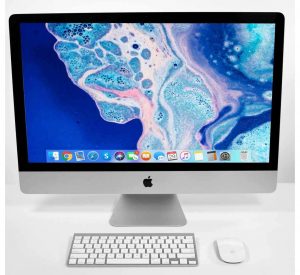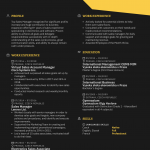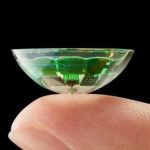Emerging Technologies Go Beyond Smartphones
While the majority of mobile devices remain focused on Smartphones, there are some emerging technologies that are pushing the boundaries. These include Mixed Reality and All-in-one devices. Apple is developing AR display technology and Google has ambitious plans for Android. Read on to learn more about the latest mobile technologies. Then, you can decide which are right for you.
All-in-one devices
A smartphone can do a lot of things, but an All-in-One device can do even more. Samsung’s Dex, for example, can transform a smartphone into a desktop PC, with all the major PC ports. It also features Bluetooth for connecting a keyboard.
Today, millions of people carry a smartphone or tablet, and they are connected to the internet. There are more than 400,000 apps available on Apple’s app store, and over 250,000 on Google’s Android market. Many of these apps have far-reaching effects on society.
Mobile devices have become a gateway to the internet, with nearly six hours of usage per day. Smartphones are already becoming more than email machines – they can also play AR-based games, listen to music, watch TV, and watch videos. In addition, content will get richer and bandwidth will increase to enable enhanced experiences. As a result, wearables may be the beginning of smartphone unbundling, allowing consumers to access services without the hassle of tucking their smartphone away.
Mixed Reality
Mixed Reality is the latest immersive technology and has several potential applications beyond the smartphone. Microsoft’s HoloLens headset is an example of mixed reality use in the workplace, where it is expected to improve collaboration, communication and learning experiences. The technology is also being used by Ford to help with the prototyping of vehicles. With the right software, mixed reality could help companies with product development, sales and employee training.
Mixed reality is a growing trend that combines augmented reality and virtual reality (VR) technology. It allows users to interact with virtual objects in the real world and have them react to their touch, as if they were real. For example, a virtual box can be opened from a real table, while a VR game can be played on a computer screen.
As a result, there is a growing market for this technology. Several major tech companies have announced their intentions to implement a mixed reality platform. One of them is Microsoft, which has already announced new mixed reality features for the Windows 10 Creators Update. The company hopes to transform the consumer experience by developing mixed reality software.
Microsoft’s HoloLens has also been undergoing an upgrade. It now allows users to create and share cross-platform mixed reality apps. This technology will allow people in different locations to share the same experience, and will transcend traditional barriers of time and space. Microsoft has also recently introduced a custom industrial edition of the HoloLens that is tailored for specific industries. The company is also adding mixed reality applications to its Dynamics 365 product lineup.
Google’s ambitions for Android
Android has long been a popular smartphone operating system, but Google’s ambitions for the system go beyond smartphones. The company recently announced plans to expand Android to include more categories of hardware and software, such as smart home appliances. In fact, the company recently bought Nest Labs, a maker of smart thermostats, for $3.2 billion, giving it a foothold in the connected home appliance market. Android executives are hoping to use the operating system to control everything from light bulbs to automobiles.
Google is also hoping to sell its own branded Android smartphone. Known as the Nexus One, the device will be manufactured by HTC. The company plans to sell it online, and may also pursue operator partnerships in the future. This means that Android customers will be able to purchase the phone they want, and will be able to take advantage of Google’s services and hardware.
Originally, the Android OS was created to improve digital cameras. But as the market for stand-alone digital cameras was fading, the company decided to shift its focus and develop Android for mobile phones. In 2005, Google bought the company. Since then, it has been developing Android for more than four years.
Along with smartphones, Google is developing a new operating system called Fuchsia that may support notebooks, desktop PCs, and smartphones. The Fuchsia OS is still in its early stages, but Google has already launched a development board for it. The OS is scheduled for release in 2021. Despite the delays, Android is growing and is becoming more advanced.
Apple’s AR display technology
Despite its popularity with consumers, Apple’s AR display technology isn’t ready to take the world by storm. Although the technology could be useful in augmented reality games, there is still some debate over its potential as a broader application. One company is Niantic, which has been working to develop a glasses-like form factor. This would reduce the mass and heat generated from the head-mounted display.
Apple is a leader in the smartphone industry, which could give it an edge in bringing augmented reality to the world. In addition, Apple has already laid the foundation for a robust software library. It released software called ARKit in 2017, which includes tools for developers. These tools include distance estimation and tracking, limb location and occlusion detection.
The tech giant has been developing augmented reality technology for years. The company has been filing patents, acquiring startups, and hiring AR experts. It has also been carefully cloaking its efforts in secrecy. Currently, no one knows when the company will unveil its AR headset, but rumors have suggested that a major unveiling could happen as early as March.
While Apple’s AR display technology is aimed at solving specific problems, the company is also exploring its potential as a broader technology platform. The goal is to develop a new kind of wearable that blends AR and VR technologies.
Motorola’s modular push
The modular push is not just for phones anymore. The concept has legs, and Motorola is making it work for its business. With its modular Z Force phone, customers can add different modules for $60 to $300. However, it is not yet clear whether the mods will work with the company’s other devices or if they’ll work with third-party manufacturers. But the modular phone idea is interesting and could define flagship devices for years to come.
Mods are simple concepts, but they speak to the potential of smartphone technology. Over the past few years, smart phone have advanced from simple communication devices to technological companions that allow us to work and play. This means that the modular push is a clear sign of how far manufacturers are willing to take the mobile platform.
Some industry analysts have criticized Android for its slow innovation, particularly with regard to hardware. But Google and Motorola both support open software platforms, which help independent developers create new applications. some say the Android platform is slowing down because it is not as innovative as it was a year ago. But Jha argues that Android is still the fastest-innovating ecosystem in the wireless industry.
Project Ara is one of Motorola’s most ambitious efforts in creating a customizable mobile device. It will launch this summer with the Moto X, and consumers will be able to choose between various colors for the back plate and external hardware accents.
Apple’s branded insurance plan
Apple’s branded insurance plan goes beyond simply protecting your smartphones. This policy covers a variety of common problems, from accidental damage to manufacturer defects. The coverage is available for an annual fee or on an annual contract, and you can choose from a variety of coverage options. Depending on the level of coverage you need, AppleCare+ plans can cost anywhere from $99 to $149. The basic plan covers a range of issues, including battery replacement (unless your device reaches eighty percent of its original capacity), accidental damage, and theft or loss. It also includes a $149 deductible.
Apple’s branded insurance plan also covers repairs and upgrades to devices. It covers devices up to three years old, as long as they remain compatible with the carrier. Apple also provides customer service and can help with data migration, basic phone number migration, and configuration. The plan covers your entire smartphones experience.














